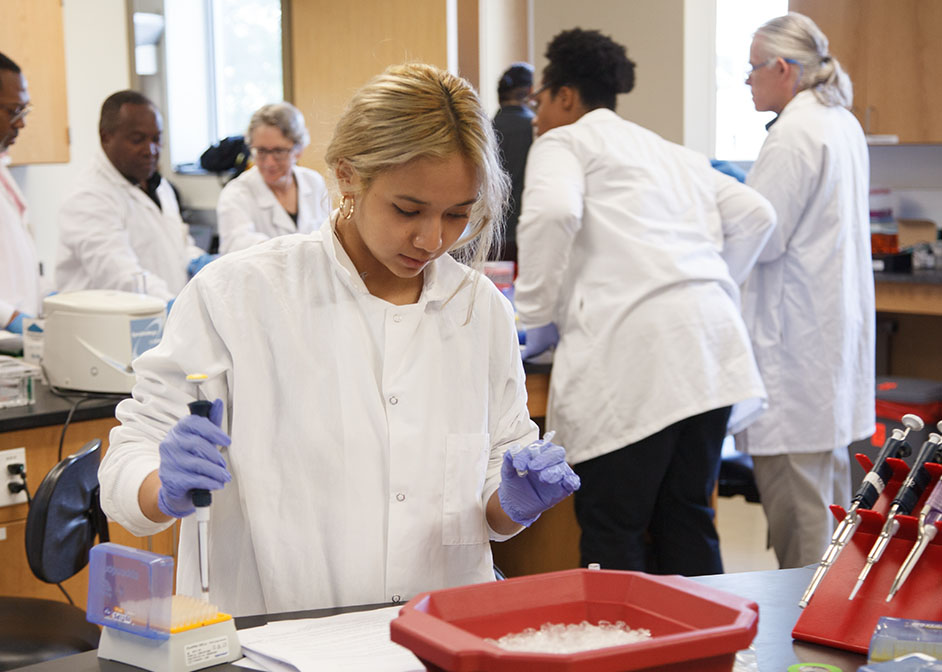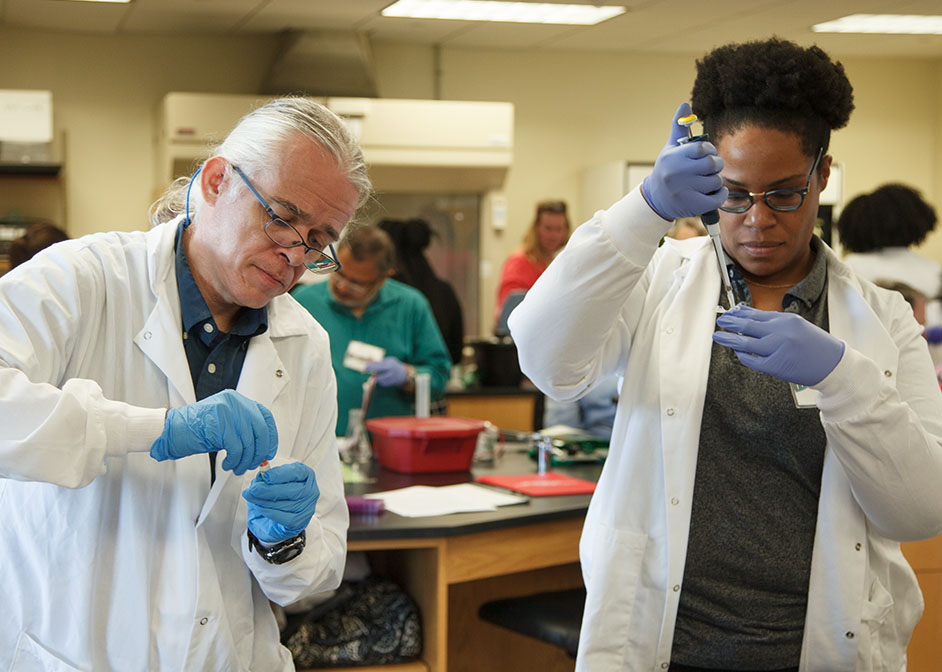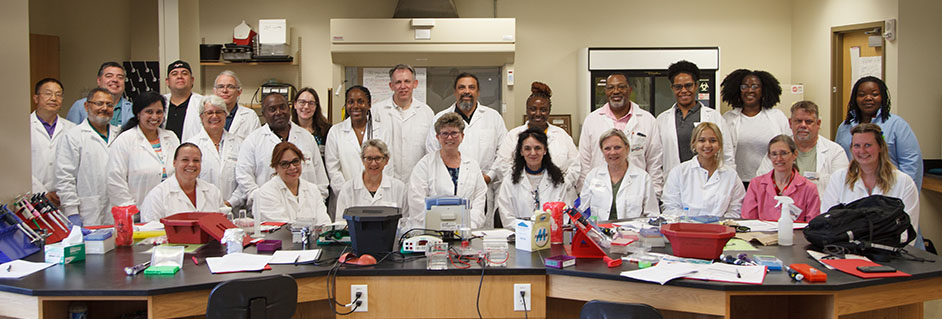CRISPR in the Classroom Network Trains Professors to Educate Next Generation of Students in CRISPR-Cas Methods and Ethics
Gene editing is making it possible to reduce the impact of some deadly diseases and future health problems and can be used to improve crop yields of the foods we eat.

The technology, known as CRISPR (clustered regularly interspersed palindromic repeats)-Cas, has grown in popularity and availability since the mechanism was discovered just over a decade ago. As a result, there’s a push to introduce the technology to students taking biology courses.
That’s where the CRISPR in the Classroom Network comes into play, providing college instructors professional development to help them incorporate the latest advances in gene editing technology through hands-on workshops.
Donna Pattison, assistant dean for student success and instructional professor at the University of Houston College of Natural Sciences and Mathematics, leads the CRISPR in the Classroom Network, which has members across the United States.
Pattison’s management of the CRISPR in the Classroom Network is positioning UH as a leader in the effort to include instruction on CRISPR-Cas in U.S. undergraduate classrooms.

“This gene editing technology is becoming more widely available, and we see a growing need to educate our students about the benefits as well as the risks, and how to use it ethically,” said Pattison.
The network held a virtual workshop in 2022, hosted via UH. The first in-person workshop took place in July 2023 with 20 instructors from 14 two- and four-year institutions who traveled to UH from across the country.
Participants took part in a week-long, hands-on lab experience while learning how to use a CRISPR-Cas9 in vitro kit. They also planned how to integrate CRISPR gene editing techniques into their lab courses and how to manage discussions on the ethics of gene editing.
History of CRISPR-Cas9
In 2012, scientists Jennifer Doudna, Emmanuelle Charpentier and their colleagues published their discovery of CRISPR-Cas9 in the journal, Science. They found the protein, Cas9, cuts DNA at a precise location when the guide RNA is matched to a complementary sequence on the DNA template.

Since their breakthrough, scientists have been researching and modifying Cas9, while identifying other Cas proteins to do everything from preventing, diagnosing and treating diseases to developing alternative fuels and improving the crops we consume.
Doudna and Charpentier were awarded the Noble Prize in Chemistry in 2020 for their work.
Lessons in Ethical Use
CRISPR-Cas9 technology could be used to remove the ability for mosquitoes to transmit malaria. It might also be possible to manipulate the genes to create sterile mosquitoes.
“While eliminating mosquitoes by editing to cause sterility may seem like a remedy for an ongoing problem for humans, it would greatly disrupt the ecosystem because they are a source of food for birds,” said Pattison. “This would not be an ethical way to use CRISPR-Cas9 because of the potentially devastating impact on the already declining bird populations. Using CRISPR to render the insect unable to carry malaria or yellow fever would be effective and less damaging to the ecosystem.”
Bringing CRISPR-Cas9 to the Classroom
In 2017, Pattison attended one of the first workshops on CRISPR-Cas9 curriculum development. Impressed with its potential in a classroom setting, Pattison joined an effort to offer workshops that educate professors about CRISPR-Cas9 and the need for classroom instruction.
The team needed funding to make the idea come to life. With UH as the lead institute, the team applied for and received a $500,000 National Science Foundation grant over five years to create a workshop that would streamline the process of teaching instructors how to bring CRISPR-Cas9 technology to undergraduate classrooms.
The grant simplifies the implementation of CRISPR-Cas9 lessons through educator workshops, a laboratory kit with curriculum, and mentoring support through the CRISPR in the Classroom Network.
“The workshops also teach instructors how to introduce CRISPR-Cas9 into lectures and work with students on different levels through classroom instruction,” Pattison said. “We also talk about costs and how to make it affordable.”
Hands-On Training for the Future
Pattison’s workshop incorporates a lab where participants engage in several experiments.
“The CRISPR lab is the same one I use in my BCHS 4311, Biochemistry 2 Laboratory course,” said Pattison. “It is part of a larger module on CRISPR included in my lab course.”
NSF funding will support additional workshops through 2026. They will be held at Pomona College in California, the Rochester Institute of Technology in New York or Randolph-Macon College in Virginia, and Rollins College in Florida.
The workshops, which are part of the network, will help establish regional expert hubs around the country. UH serves as the network’s home and as a Gulf Coast hub.
Additional virtual workshops are being considered to reach more participants.
- Chris Guillory, College of Natural Sciences and Mathematics